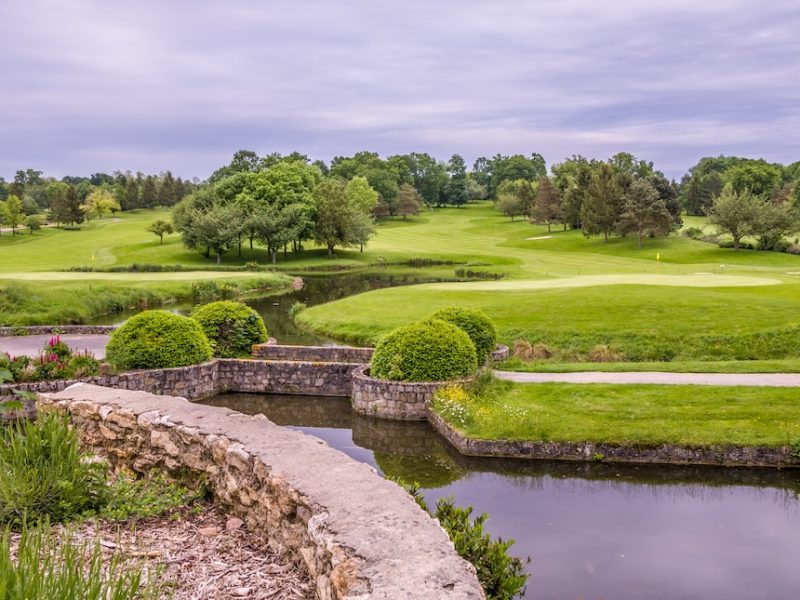Overview
Introduction
Golf courses are sprawling recreational spaces that provide a unique experience for players of all skill levels. Nine-hole golf courses have gained popularity due to their shorter play time and lower maintenance costs compared to their 18-hole counterparts. These courses offer a more accessible and enjoyable option for golfers, allowing them to fit a round of golf into their busy schedules. In this article, we will explore the factors that affect the size of a 9-hole golf course and how to calculate the required acres for such a facility.
Purpose of a 9-hole golf course
A 9-hole golf course serves several purposes in the world of golf. Firstly, it provides a less time-consuming alternative to a full 18-hole course, making it ideal for players who have limited time or prefer shorter rounds. Additionally, a 9-hole course can be a great option for beginners or those who are new to the game, allowing them to gain experience and confidence before tackling a longer course. Furthermore, a 9-hole course can be a valuable addition to a larger golf facility, offering variety and flexibility for golfers of all skill levels. Overall, the purpose of a 9-hole golf course is to provide an enjoyable and accessible golfing experience for players of all backgrounds and abilities.
Benefits of a 9-hole golf course
A 9-hole golf course offers several benefits compared to an 18-hole course. Flexibility is one of the key advantages, allowing golfers to play a quick round of golf in a shorter amount of time. This is especially appealing to busy individuals who have limited time for recreational activities. Additionally, a 9-hole course requires less land, making it more cost-effective to maintain and operate. Furthermore, it has a smaller environmental impact compared to larger courses, requiring fewer resources for maintenance and creating less disturbance to the surrounding ecosystem. Overall, a 9-hole golf course provides a convenient and sustainable option for golf enthusiasts.
Factors Affecting the Size of a 9-Hole Golf Course
Course Layout
The course layout is a crucial factor in determining the size of a 9-hole golf course. It involves the arrangement of holes, fairways, and hazards to create an enjoyable and challenging playing experience. A well-designed course layout ensures that players have a variety of shot options and strategic challenges. The layout should also consider the flow of play, allowing golfers to move smoothly from one hole to the next. Additionally, the course layout should take into account the safety of players and the surrounding environment. Proper planning and attention to detail in the course layout can greatly enhance the overall golfing experience.
Land Topography
The land topography plays a crucial role in determining the size of a 9-hole golf course. Flat and level terrain is ideal for golf course construction as it requires less earthmoving and grading. However, if the land has slopes or uneven areas, additional work may be needed to create a playable and aesthetically pleasing course. Elevated areas can provide scenic views and add interest to the course design. On the other hand, water bodies such as lakes or ponds can enhance the beauty of the golf course but may require careful planning and design considerations. It is important to assess the land topography thoroughly to ensure the course is enjoyable for golfers of all skill levels.
Available Land
The amount of available land is a crucial factor in determining the size of a 9-hole golf course. Limited land may require creative course design to make the most of the space available. Large tracts of land provide the opportunity for a more expansive and diverse course layout. It is important to consider the surrounding environment and any restrictions or regulations that may affect the use of the land. Additionally, the availability of water sources and natural features can greatly enhance the appeal of the golf course.
Calculating the Required Acres
Standard Measurements
When determining the required acres for a 9-hole golf course, several standard measurements are taken into account. These measurements include the length of each hole, the width of fairways, and the size of greens. Typically, a standard 9-hole golf course requires around 30 to 60 acres of land. However, the specific acreage may vary depending on factors such as course design and available land. It is important to note that the dimensions of a golf course should be carefully planned to ensure a challenging yet enjoyable experience for players.
Considerations for Different Course Designs
When designing a 9-hole golf course, there are several considerations that need to be taken into account. One important factor is how does it work. The layout of the course should be carefully planned to ensure a smooth flow of play and to provide a challenging yet enjoyable experience for golfers. Another consideration is the land topography. The terrain of the land can greatly impact the design of the course, with hilly areas requiring more acreage than flat areas. Lastly, the available land plays a crucial role in determining the size of the golf course. It is important to have enough space to accommodate the fairways, greens, and other facilities. By carefully considering these factors, golf course designers can create a 9-hole course that meets the needs of players and maximizes the use of the available land.
Additional Facilities and Amenities
In addition to the golf course itself, a 9-hole golf course may require additional facilities and amenities to enhance the overall experience for players. These facilities can include a clubhouse with pro shop, locker rooms, and restaurant for players to relax and socialize after their game. Other amenities such as practice areas and golf carts can also be provided to improve the convenience and enjoyment of the players. Furthermore, offering golf lessons and golf drills can help golfers improve their skills and enhance their experience on the course. Providing these additional facilities and amenities can attract more players and create a well-rounded golfing destination.
Conclusion
Summary of Required Acres
After considering the factors affecting the size of a 9-hole golf course and calculating the required acres, it is clear that proper planning is essential. The summary of required acres provides a guideline for golf course designers and developers to ensure they have enough land to accommodate the course layout, land topography, and additional facilities and amenities. Longer shots are an important aspect of golf, and having the right amount of space allows players to enjoy the game to its fullest potential.
Importance of Proper Planning
Proper planning is crucial for the success of a 9-hole golf course. It ensures that the course is designed in a way that maximizes its potential and meets the needs of golfers. Golf tips are an important aspect of planning, as they help determine the layout and features of the course. By considering factors such as the skill level of the target audience and the desired playing experience, course designers can create a layout that offers a challenging yet enjoyable game. Additionally, proper planning allows for the incorporation of additional facilities and amenities, such as practice areas and clubhouse, which enhance the overall golfing experience. With careful planning, a 9-hole golf course can become a popular destination for golfers of all skill levels.
Future Trends in Golf Course Design
As golf continues to evolve, there are several future trends that are shaping the design of golf courses. One such trend is the increasing emphasis on environmental sustainability. Golf course designers are now incorporating eco-friendly practices such as water conservation, use of native plants, and wildlife preservation. Another trend is the integration of technology in golf course design. This includes the use of drones for course mapping, smart irrigation systems for efficient water management, and GPS tracking for improved player experience. Furthermore, there is a growing demand for flexibility in golf course design, with shorter and more adaptable layouts. This allows for a wider range of players to enjoy the game, including beginners and those with limited time. Overall, these future trends are aimed at enhancing the golfing experience and ensuring the long-term sustainability of golf courses.


